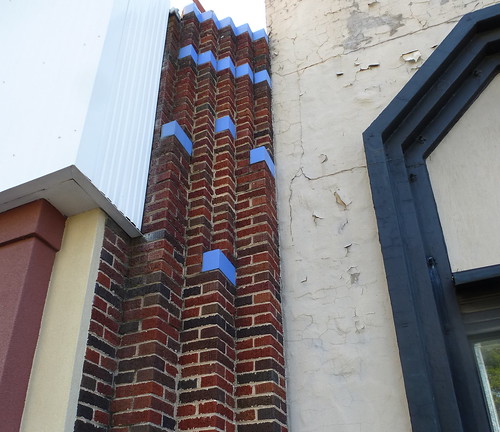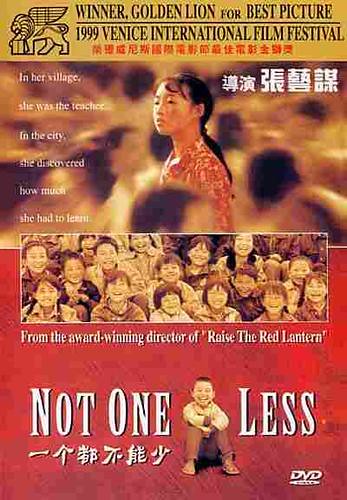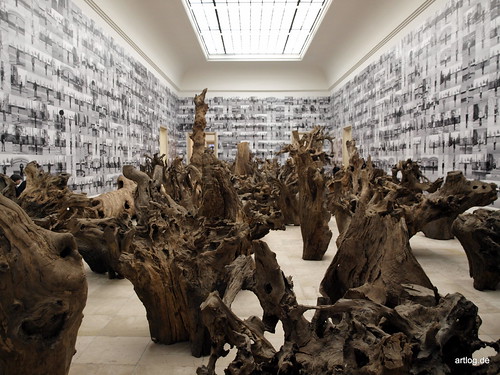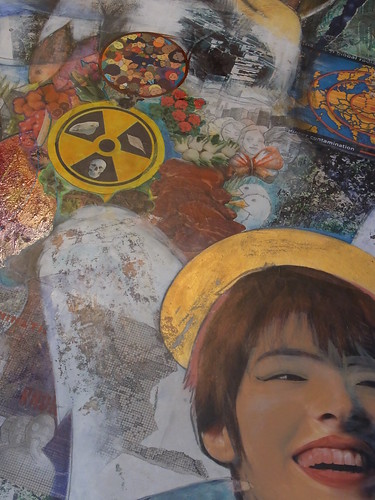1. The Fuller center for Housing is affiliated with a well-known program called __ for Humanity.
a) Helpers b) Habitat c) Housing d) Happy.
2. Millard Filmore, a native of Alabama who made a fortune as a lawyer, founded two national shelter organizations. T / F
3. The Fuller Center is not a give-away program. Impoverished people pay market value for their houses. T / F
4. People who get Fuller Center houses are required to do 350 hours of service that is called an investment via __ equity. a) elbow grease b) atomic fusion c) charity d) sweat.
5. The generous fellow who founded Fuller Center was notable for giving grants to deserving people and organizations. He was a __ . a) philanthropist b) philanderer c) philosopher
d) phallopian.
6. A major gift to the Fuller Veterans Build in Shreveport came from famed British musician Roger Waters, a founder of the psychedelic group called __ . a) Grateful Dead b) Rolling Stones c) the Beatles d) Pink Floyd.
7. The Veterans Build project is located on a) Martha St b) Viking Dr c) Youree Dr d) Olive St.
8. The project is located in the neighborhood known as a) Pierremont b) Highland
c) Stoner Hill d) Coates Bluff.
1b2f3f4d5a6d7a8c
Washington to Hanoi: Vietnam review
1. Geneva is a city in the nation of a) Netherlands
b) Switzerland c) Germany d) Belgium.
2. The Geneva Accord was part of ending the war between Vietnam and __ . a) France b) England
c) Belgium d) Netherlands.
3. Appropriate order of the presidents: a) Eisenhower, Nixon, Kennedy b) Kennedy, Nixon, Johnson
c) Nixon, LBJ, Eisenhower d) Eisenhower, JFK, LBJ
4. Not a Senator from Massachusetts: a) John F Kennedy
b) Dwight Eisenhower.
5. Commander-in-chief of US during Vietnam conflict:
a) Nixon b) Truman c) JFK d) Eisenhower.
6. President associated with secondary escalation of troops in Vietnam: a) Nixon b) JFK c) LBJ .
7. Gulf of Tonkin Resolution: a) Nixon b) JFK c) LBJ.
8. Tet Offensive: a) Nixon b) JFK c) LBJ.
9. Great Society: a) Nixon b) JFK c) LBJ.
10. End of Vietnam war, ‘73 - ‘75: a) Nixon b) JFK c) LBJ.
11. Domino Theory: a) Nixon b) JFK c) LBJ d) Eisenhower.
12. Tet Offensive: a) Hue b) Hanoi c) Bangkok
d) Cambodia.
13. Viet Cong: a) US b) China c) Japan.
14. Australians: a) US b) China c) Japan.
15. Protest march in Washington, DC: a) 1966 b) 1969
c) 1973 d) 1975.
16. Sent US advisers to Vietnam: a) LBJ b) Nixon
c) JFK.
17. Ho Chi Minh: a) Hanoi b) Hue c) Da Nang d) Saigon.
18. Indochina: a) France b) Belgium c) England d) US.
19. “Goodnight, Irene”: a) Dylan b) Leadbelly c) Hendrix.
20. Civil Rights march on Washington, DC: a) 1960
b) 1963 c) 1969 d) 1971.
21. President who banned racial discrimination in the military: a) LBJ b) JFK c) Nixon d) Eisenhower e) Truman.
22. Vietnam’s population today is about one third the US population. T / F
23. Vietnam is a communist nation today. T / F
24. Vietnamese boat people: a) 1954 b) 1966 c) 1969
d) 1975.
25. Not an example of Vietnamese ingenuity: a) punji traps
b) tunnel system c) betel nut.
Washington to Hanoi: Vietnam review
1. b 2. a 3. d 4. b 5. a 6. a 7. c 8. c 9. c 10. a 11. d 12. a
13. b 14. a 15. b 16. c 17. a or d 18. a 19. b 20. b 21. e 22. F
23. T 24. d 25. c
Vietnam Conflict Review
1. "Those who don't learn history are doomed to ___ it." a) wonder about b) argue c) repeat d) study
2. 1950: Pres. __ sends advisers to help the French. a) Eisenhower b) JFK c) Nixon d) Truman e) LBJ.
3. 1954: Vietnam is divided by the document called the __ __. North is communist; South is democratic. a) Gulf of Tonkin Resolution b) Tet Offensive c) Geneva Accord d) Treaty of Versailles.
4. The French exit after almost 100 years of occupation of the 3-nation region called __. a) Indonesia b) LaoCamNam c) Vietnam and its neighbors d) Indochina.
5. __ __ __, leader of the communist revolutionaries, is triumphant in both 1954 and in 1975 (though posthumously). a) Gen. Da Nang b) Chaing Kai Shek c) Chairman Mao Zedong d) Hai Phong e) Ho Chi Minh
6. In 1954 Pres. __ sends advisers to aid the S. Vietnam Army (see answers in #2).
7. 1961; Pres. __ sends more advisers - some 15,000 US troops in 'Nam. (see answers above)
8. 1964; Pres. __ asks Congress for approval of direct military action. Bombing of N. Vietnam begins.
9. 1965; Doves make their opinions known in regards the war in Vietnam: a) conservatives b) liberals c) undecided d) veterans e) birds.
10. 1968; Peak US troops reach peak: a) quarter million b) half million c) million d) almost 2 million.
11. 1968: Communist surprise attacks on US-held regions, including the capital city: a) Da Nang b) Hanoi c) Bangkok d) Saigon.
12. Called the Tet Offensive, it is widely seen in the US as a) encouraging b) enraging c) discouraging d) inevitable.
13. 1969; Pres. __ reduces troop strength in Thailand and Vietnam. But he continues the bombing of N. Vietnam. (see answer choices in #2)
14. A massive protest demonstration in 1969 brings students and other anti-war groups from across the US to the city of a) Paris b) NYC c) San Francisco d) Washington e) New Orleans.
15. In 197_ a peace pact with the communists was signed in Paris. It signaled the end of the US’ longest-running war. The year was a) 1954 b) 1964 c) 1974 d) 1984.
16. The communist forces won victory over S. Vietnam in a) 1968 b) 1971 c) 1975 d) 1977.
17. During the cold war era the US goal was to stop communism across the globe. In regions such as Southeast Asia the US military felt a risk of a communist chain reaction. Therefore Pres. Eisenhower enunciated the policy known as the __ theory. a) Chain reaction b) Cold war c) Domino d) Chess.
18. The name for the communist guerillas living and fighting in South Vietnam:
a) Orangutans b) North Vietnam Army (NVA) c) Viet Tigers d) Viet Cong.
19. Principal US allies in Vietnam: a) England, Netherlands b) Canada, Australia
c) Japan, Mexico d) England, Germany.
Viet answers:
1. c) repeat 2. d) Truman 3. c) Geneva Accord 4. d) Indochina
5. e) Ho Chi Minh 6. a) Eisenhower 7. b) Kennedy 8. e) Johnson
9. b) liberals 10. b) half 11. d) Saigon 12. c) discouraging 13. c) Nixon
14. d) Washington 15. c) ‘74 16. c) 1975 17. c) domino 18. d) Viet cong 19. b) Canadians / Australians
1. c 2. d 3. c 4. d 5. e 6. a 7. b 8. e 9. b 10. b 11. d 12. c
13. c 14. d 15. c 16. c 17. c 18. d 19. b
Presidents / Vietnam quiz
Choose from these presidents -
a) Nixon b) LBJ c) JFK d) Eisenhower e) Truman
1. Resigned from presidency rather than face impeachment.
2. The most successful of the US generals in WW II.
3. Formerly a senator from Texas.
4. Once a senator from Massachusetts.
5. Defeated Richard Nixon for presidency in 1960.
6. Served as vice-president under Eisenhower.
7. Associated with Franklin Roosevelt.
8. Associated with the Watergate scandal.
9. Commander in chief of US military in WW II.
10. President associated with successful legislation on civil rights and Medicare; his program was called the Great Society.
11. President who ended the Vietnam war.
12. President who used the Gulf of Tonkin Resolution to escalate American troop strength in Vietnam.
Presidents / Vietnam quiz answers -
a 1. d 2. b 3. c 4. c 5. a 6.
e 7. a 8. e 9. b 10. a 11. b 12.
1. Fukushima, site of a nuclear power plant meltdown, is located on the Japanese island of a) Kyushu b) Honshu c) Hokkaido
d) Shikoku.
2. The nuclear meltdown occurred in a )1986 b) 2011 c) 2013.
3. The fuel rods in a nuclear reactor are made of a) steam b) heavy water c) coolant
d) uranium.
4. Electricity-producing nuclear plants begin by producing a) steam b) heavy water c) coolant
d) uranium.
5. Power reactors work by splitting __ in a chain reaction. a) fuel rods b) atoms c) coolant
d) uranium.
6. Fukushima's seawall was about 20' tall; the tsunami's height was about a) 49' b) 99'
c) 149'.
7. The meltdown could've been avoided by preventing flooding of the basement of the turbine buildings, location of the emergency diesel __ . a) generators b) reactors c) cafeteria
d) thermal producers.
8. The key failure in the Fukushima disaster: a) mechanical factors b) human factors.
9. Basically, the Fukushima meltdown was unavoidable. T / F
10. Japan has numerous renewable energy alternatives, including wind turbine, hydroelectric, solar energy and __ power, seen in the numerous volcanic mountains of the nation.
a) nuclear b) steam c) tidal d) geothermal
1b2b3d4a5b6a7a8b9f10d
Nippon review -
1. During the colonial era in Europe, the nation of Japan was called a) Cathay b) Cipangu.
2. Japan has a heterogeneous population. T / F
3. Japan’s population is approximately half that of the US.
T / F
4. Hayao Miyazaki is notable for the type of movies called monster movies, a terrific example being Godzilla. T / F
5. “Empty orchestra” is the meaning of a term coined by the Japanese in the 70’s when technology allowed creative manipulation of recorded works. It has since become a world-wide source of entertainment. It is a) sashimi b) j-pop c) auto tune d)karaoke.
6. Most Japanese are able to integrate 2 types of religious practice into their lives: a) Buddhism b) Hinduism
c) Islam d) Christianity e) Judaism f) Shintoism
g) Confucianism h) Atheism.
7. In terms of altitude, Mt Fuji can be compared to the
a) Appalachians b) Rocky Mtns.
8. Some people, typically the ill-educated, may be said to be fearful of immigrants and other non-native ethnic types. They may be termed xenophobic. T / F
9. Bamboo and paper, classic ingredients in Japanese art, may be used to make large, rectangular aero forms called a) tea houses b) temples c) tori d) kites.
10. Anime has been part of Japanese culture since 1917. In 1937 Japanese anime movie-makers were influenced by a Disney film called a) Snow White b) 101 Dalmatians
c) The Jungle Book.
11. Japanese greeting: a) Ni hau! b) Salaam! c) Namaste'!
d) Konichi wa!
1b2f34f5d6a,f7b8t9d10a11d
1. The city of Nagasaki is on the island of a) Shikoku b) Kyushu c) Honshu d) Hokkaido. B
2. The city of Hiroshima is on the island of a) Shikoku b) Kyushu
c) Honshu d) Hokkaido. C
3. The city of Kyoto is on the island of a) Shikoku b) Kyushu c)
Honshu d) Hokkaido. C
4. To say "good afternoon:" a) ohayo (gozaimas') b) konnichiwa c) konbanwa. B
5. Like Hindus, Buddhists believe in the law of karma, in which there
is a consequence for one's actions. T / F T
6. Japan's population is close to one half of US population. T / F T
7. Japan's closest neighbor: a) S Korea b) China c) Taiwan d) Philippines. A
8. a) Hayao Miyazaki b) Osamu Tezuko c) Soichiro Honda has been called
the Father of both Anime and of Manga. He was an illustrator and artist rather than a filmmaker. B
9 & 10. Most Japanese are able to integrate 2 types of religious practice
into their lives: a) Hindusim b) Buddhism
c) Islam d) Christianity e) Judaism f) Confucianism g) Shintoism h)
Atheism. Please pick 2. B & G
11. Japanese comedy about food: a) Spirited Away b) Tampopo c)
Totoro d) Manga. B
Gandhi in Mumbai
1. Gandhi's first protest activities were actions against the government in __ . a) Kenya b) India c) Sri Lanka
d) South Africa.
2. Home Rule was the slogan of the Congress Party of India. It meant that the British should
a) rule from London b) give representation in Parliament c) leave India d) leave Delhi.
3. Gandhi was raised as a a) Sikh b) Muslim c) Christian
d) Hindu.
4. The religious minority of India originating in the Punjab region: a) Sikh b) Muslim c) Christian d) Hindu.
5. Gandhi began his protest activities in India soon after the end of a) WWI b) WW2 c) the US Civil Rights Movement
d) Great Depression.
6. The capital of India: __ .
1d2c3d4a5a6Delhi
Gandhi in Delhi
1. Traditional sweet scent of India packaged as a garland: a) gardenia b) rose c) lilies d) jasmine.
2. South Africans have numerous derogatory terms for Indians. Not among them: a) Sammy b) coolie c) kaffir d) pachuco.
3. On the train in South Africa Gandhi quotes a book of __ literature. a) Christian b) Hindu c) Muslim d) Sikh.
4. Gandhi uses the phrase "children of __ " to emphasize the incorrectness of racist laws. a) Brahma b) Allah c) God.
5. Car manufacturing company that produces a cheap city car: a) Nano b) Tata c) Momo d) Bapu.
6. Nefarious crop emphasized by the British in India - to be sold to the Chinese. a) indigo b) tobacco c) saffron d) opium.
7. City on the Bay of Bengal: a) Delhi b) Agra c) Mumbai d) Kolkata.
8. City on the Arabian Sea: a) Delhi b) Agra c) Mumbai d) Kolkata.
9. City called the Silicon Valley of India: a) Delhi b) Agra c) Mumbai d) Bangalore.
1d2d3a4c5b6d7d8c9d
Gandhi in South Africa
1. Gandhi's life spanned the 19th and 20th centuries. T / F
2. Gandhi studied to be a barrister, which is a Britishism for: a) lawyer b) professor c) business man d) clergyman.
3. South Africa was a European colony at the turn of the century. It is part of the empire built by the a) British b) French c) Hindus d) Muslims.
4. In all his pronouncements, Gandhi encourages ethnic unity. That would be between the a) castes b) major social organizations c) armies d) governments.
5. Gandhi declares that being raised in a crossroads region gave him an unusual perspective on religion. He lived near a) Delhi b) Bay of Bengal c) Himalayas d) Arabian Sea.
6. What is the great social taboo of India that Gandhi wanted to change?
a) Hindu vs. Muslim b) the caste system c) the class system d) British vs. Indians.
7. Gandhi felt that the beliefs of Christianity might help people understand racism. T / F
8. Gandhi understood poverty and accepted it as inevitable in India.
T / F
9. Gandhi was not assasinated; he was assassinated. T / F
1.t 2.a 3.a 4.a 5.d 6.b 7.t 8.t
1. The Taj Mahal was built about the year __ .
2. Its construction was commanded by the emperor called the __ Jahan.
3. Jahan was the Mughal - or Mogul - emperor of ___ India.
a) northern b) eastern c) southern d) western.
4. The design of the Taj reflects a particular religion: a) Islam b) Judaism c) Hinduism d) Jainism.
5. It was built of white __ (type of stone) for Mumtaz Mahal.
6. A building that is a tomb is called a __. a) masala b) malformed c) mausoleum d) mandible.
7. The designers of the Taj were from the nation of __ . a) Persia b) Afghanistan c) Arabia.
8. There are three items of the Taj Mahal complex that identify the Shah's culture as Islamic: the mosque, the Arabic inscriptions and the towers called __ .
9. The decorative designs on the walls are called __.
10. Aside from the decorated caskets of the emperor and his wife, the interior of the Taj Mahal is empty. T / F
11. In the final chapter of his life the emperor's son, Aurangzeb, made sure his father was __.
1.1600 2.shah 3.a 4.a 5.marble 6.c 7.a 8.minarets 9. arabesques or calligraphy 10. t
11. imprisoned
Thursday, May 16, 2013
Semester geography exam review, May, 2013
Semester exam schedule, Caddo Magnet HS, 5/20 - 5/23, 2013
Exams
Mon, 5/20
1) 8:29 - 8:40 1st period class, roll call.
2) 8:45 - 9:45 2nd class
3) 9:50 - 11:50 exam: 1st
4) 11:55 - 1: 25 4th class / lunch
5) 1:30 - 3:33 exam: 3rd
5/21
same times as above
1) 5th class
2) 6th class
3) exam: 5th
4) 8th class
5) exam: 7th
5/22
1) 1st class
2) 1st class
3) exam, 2nd
4) 3rd class
5) exam: 4th
5/23
1) 5th class
2) 5th class
3) exam: 6th
4) 7th class
5) exam: 8th
Report cards will be mailed to students June 10.
Wednesday, May 15, 2013
Japanese aesthetic: wabi and sabi
"Wabi-sabi is the most conspicuous and characteristic feature of traditional Japanese beauty and it occupies roughly the same position in the Japanese pantheon of aesthetic values as do the Greek ideals of beauty and perfection in the West," says Wikipedia.
"If an object or expression can bring about, within us, a sense of serene melancholy and a spiritual longing, then that object could be said to be wabi-sabi."[2]
"Wabi-sabi nurtures all that is authentic by acknowledging three simple realities: nothing lasts, nothing is finished, and nothing is perfect."[3]
Wabi now connotes rustic simplicity, freshness or quietness, and can be applied to both natural and human-made objects, or understated elegance. It can also refer to quirks and anomalies arising from the process of construction, which add uniqueness and elegance to the object.
Sabi is beauty or serenity that comes with age, when the life of the object and its impermanence are evidenced in its patina and wear, or in any visible repairs.
Essay on making Japanese raku tea bowls
Descriptive essay (12 pts) on the raku experience:
- third person, scholarly tone.
- details: names, materials, locations, etc.
- quote
- colorful title and opening sentence.
- construction: logical flow, grammar, etc.
Tuesday, May 14, 2013
Exam review of Coates Bluff nature Trail material
1. Tree whose bark has small growths that resemble tiny volcanic peaks: __ .
a) Cottonwood b) Hackberry c) Sycamore d) Dogwood.
2. This tree has a mottled bark and gargantuan leaves: __ . a) Cottonwood b) Hackberry c) Sycamore d) Dogwood.
3. Type of oak that is most prevalent in North Louisiana river bottoms: __ oak.
a) Live b) Water c) Pine d) River.
4. This tree produces "knees," a sort of knobby growth that pokes up through the ground in the vicinity of the tree. __ . a) Cottonwood b) Hackberry c) Sycamore
d) Cypress.
5. Tree that produces puce-colored blossoms (purplish-reddish-brown) in the late winter: __ __ . a) Cottonwood b) Redbud c) Sycamore d) Dogwood.
6. If this woods vine isn't the 5-leafed Virginia Creeper it must be __ . a) Cottonwood b) Redbud c) Sycamore d) Poison Ivy.
7. The principal forest grapes of North Louisiana: __ . a) Cottonwood b) Redbud c) Muscadine d) Virginia Creeper.
8. When clay, sand and silt occur in a mixed soil, it is called __ . a) riparian
b) loam c) topsoil d) alluvial.
9. Louisiana is widely-known as a state with unusually rich bird life. T / F
10. The zone along a bayou is __ land. a) riparian b) conservation c) aquifer
d) up.
Thursday, May 09, 2013
Made in China by Foxconn: Kindles, Playstations, Wiis and the iPhone
Hon Hai Precision Industry Co., Ltd., trading as Foxconn, is a Taiwanese multinational electronics contract manufacturing company headquartered in Tucheng, New Taipei, Taiwan, says Wikipedia
It is the world's largest electronics contract manufacturer measured by revenues.[3][4]
Foxconn's products include the iPad,[5] iPhone,[6] iPod,[6] Kindle,[7] PlayStation 3[8] and Wii U.[9]
Foxconn has been involved in several controversies, most relating to how it manages employees in China where it is the largest private-sector employer.[10]
In 2012 Apple hired the Fair Labor Association to conduct an audit of working conditions at Foxconn.[11]
Wednesday, May 08, 2013
The ancient Silk Road and China
Slaves, perfumes, spices, medicines, jewels, glassware: the Silk Routes (collectively known as the "Silk Road") were important paths for cultural, commercial, and technological exchange between traders, merchants, pilgrims, missionaries, soldiers, nomads and urban dwellers from Ancient China, Ancient India, Ancient Tibet, Persian Empire and Mediterranean countries for almost 3,000 years.[5]
It gets its name from the lucrative Chinese silk trade, which began during the Han Dynasty (206 BC – 220 CE), says Wikipedia.
Extending 4,000 miles, the routes enabled people to transport slaves and luxuries such as silk, satin, hemp and other fine fabrics, musk, other perfumes, spices, medicines, jewels, glassware and even rhubarb, as well as serving as a conduit for the spread of knowledge, ideas, cultures, zoological specimens and some non indigenous disease conditions[6] between Ancient China, Ancient India (Indus valley, now Pakistan), Asia Minor and the Mediterranean.
Trade on the Silk Road was a significant factor in the development of the great civilizations of China, India, Egypt, Persia, Arabia, and Rome, and in several respects helped lay the foundations for the modern world. Although the term the Silk Road implies a continuous journey, very few who traveled the route traversed it from end to end.
For the most part, goods were transported by a series of agents on varying routes and were traded in the bustling markets of the oasis towns.[6]
A guide to the Mandarin Chinese movie, "Not One Less"
Describe the terrain around Shuxian School.
Paint a verbal picture of the condition of the village school.
How would you characterize the mayor? Describe 2 incidents which you feel illustrate his role in the story.
Teacher Wei undergoes something of a transformation as the story unfolds.
Give an example of her style in the beginning and give an example of her behavior as she grows into her job.
Describe the elements of life in the city versus life in the country - as seen in this movie - that were most affecting to you.
What 2 incidents do you remember from Wei Minzhi’s initially unsuccessful attempt to get help at the TV station?
In the city Wei can easily be spotted as a girl from the country. One give-away is her clothing. What part of her behavior would be evidence she was a provincial girl?
The bureaucracy of China is illustrated by the Mayor’s actions and by the attitude of the receptionist at the TV station. Offer examples of their behavior which reveal the nature of the bureaucracy.
Not One Less guide / Trudeau
1) Not One Less is a movie in a) Mandarin Chinese b) Cantonese Chinese c) Rural Chinese.
Choose between a. Teacher Gao b) the Mayor c) Teacher Wei d) Zhang Huike in the following prompts:
2) Most frugal character.
3) Battling the drop-out rate.
4) Money conscious.
5) Menial work.
6) Moderating influence.
7) Greatest allegiance.
8) Stubborn.
9) Happy-go-lucky.
10) Philosophical and accepting.
11) Chinese currency: a) yuan b) yen c) Chinese dollar.
12) Shuixian School is located near a) Xi’an b) Beijing c) Shanghai.
13) Symbol of pride in learning and efficient use of resources: a) sending swift runner of the class to the sports specialty school b) flag c) chalk.
14) Type of humor which crosses cultural borders: a) religious b) political
c) scatalogical d) sarcasm.
15) The director of Not One Less: a) Jet Li b) Zhang Huike c) Zhang Yimou
d) Shi Huang Di.
Chinese manufacturing advancing rapidly: Geely's Gleagle Panda
Few in the US know about the Chinese auto companies.
Once these companies were experts at "knocking off" Western car models. They could make a fake BWMW and sell it for half price. Or a fake Jeep or Honda.
Today companies Like Geely Motors are less copycats and more independent. Recently the Swedish car company Volvo was purchased by Geely, indicative of the Chinese company's strength.
Tuesday, May 07, 2013
Mon, May 13: China reports via video
Brief reports on China may be completed via a powerpoint presentation or by locating and explaining the background to a brief video clip.
This week my classes have seen samples of downtown Shanghai and Hong Kong, They have seen street food being prepared and sampled in Szechwan province and neighboring Hanoi. They have even seen rats being prepared for dining in restaurants in Guangzhou.
They have samples Chinese opera and 2 movies on Chinese history. And the have taken lessons in Mandarin Chinese.
Presentation -
Notes so that you can tell the class where and what topic you are presenting. Title or url of a clip of approx 3 mins.
Robert "Weiwei" Trudeau: adding a Chinese name in imitation of thew Chinese taking Western names
"At my workplace, which is 90 percent mainland Chinese, just about everyone I interacted with had an English name, usually selected or received in school. The names ran the gamut, from the standard (Jackie, Ivy) to the unusual (Sniper, King Kong), but what really struck me was how commonly people used them when addressing one another, even when the rest of the conversation was in Chinese," says Huan Hsu at slate.com.
Therefore I want my students to honor the Chinese by researching and choosing a Chinese name.
I've chosen "Weiwei" because I know much about the Chinese artist Ai Weiwei.
Ai Weiwei (born 1957) is a Chinese contemporary artist, active in sculpture, installation, architecture, curating, photography, film, and social, political and cultural criticism, says Wikipedia.[1][2]
Ai collaborated with Swiss architects Herzog & de Meuron as the artistic consultant on the Beijing National Stadium for the 2008 Olympics.[3] As a political activist, he has been highly and openly critical of the Chinese Government's stance on democracy and human rights. He has investigated government corruption and cover-ups, in particular the Sichuan schools corruption scandal following the collapse of so-called "tofu-skin schools" in the 2008 Sichuan earthquake.[4]
In 2011, following his arrest at Beijing airport on 3 April, he was held for over two months without any official charges being filed; officials alluded to their allegations of "economic crimes" (tax evasion). In October 2011 ArtReview magazine named Ai number one in their annual Power 100 list. The decision was criticised by the Chinese authorities.
By next class have your Chinese name and notes on the person from whom you have adopted the name.
Sunday, May 05, 2013
Your future: trends in petrochemicals and in clean energy
Jonathan Fahey, Associated Press
NEW YORK (AP) — Technology created an energy revolution over the past decade — just not the one we expected.
By now, cars were supposed to be running on fuel made from plant waste or algae — or powered by hydrogen or cheap batteries that burned nothing at all. Electricity would be generated with solar panels and wind turbines. When the sun didn't shine or the wind didn't blow, power would flow out of batteries the size of tractor-trailers.
Fossil fuels? They were going to be expensive and scarce, relics of an earlier, dirtier age.
But in the race to conquer energy technology, Old Energy is winning.
Oil companies big and small have used technology to find a bounty of oil and natural gas so large that worries about running out have melted away. New imaging technologies let drillers find oil and gas trapped miles underground and undersea. Oil rigs "walk" from one drill site to the next. And engineers in Houston use remote-controlled equipment to drill for gas in Pennsylvania.
The result is an abundance that has put the United States on track to become the world's largest producer of oil and gas in a few years. As domestic production has soared, oil imports have fallen to a 17-year low, the U.S. government reported Thursday.
The gushers aren't limited to Texas, North Dakota and the deep waters of the Gulf of Mexico. Overseas, enormous reserves have been found in East and West Africa, Australia, South America and the Mediterranean.
"Suddenly, out of nowhere, the world seems to be awash in hydrocarbons," says Michael Greenstone, an environmental economics professor at the Massachusetts Institute of Technology.
The consequences are enormous. A looming energy crisis has turned into a boom. These additional fossil fuels are intensifying the threat to the earth's climate. And for renewable energy sources, the sunny forecast of last decade has turned overcast.
This is the story of how technological advances drove a revolution no one in the energy industry expected. One that is just beginning.
___
EXPLORING ENERGY FRONTIERS
The new century brought deep concerns the world's oil reserves were increasingly concentrated in the Middle East — and beginning to run out. Energy prices rose to record highs. Climate scientists showed that reliance on fossil fuels was causing troubling changes to the environment.
"The general belief was that the end of the oil era was at hand," says Daniel Yergin, an energy historian and author of "The Quest: Energy, Security and the Remaking of the Modern World."
As a result, Wall Street, Silicon Valley and governments were pouring money into new companies developing alternative forms of energy that promised to supply the world's needs without polluting.
Even oil and gas companies got in the game. BP had adopted the slogan "beyond petroleum" in 2000 and threw millions into its solar division. Shell partnered with another company to fire up a plant to convert agricultural waste into ethanol.
So strong was the lure of alternative energy that veterans of the oil patch began fleeing for startups.
In 23 years at Shell, David Aldous helped develop projections that showed a booming world population and rising energy demand. He also saw how hard it was for big oil companies to find enough oil every year to replace all they sold. He left Shell to join Range Fuels, a company that promised to turn wood chips into ethanol, in 2008.
"I felt we needed faster innovation," he says.
___
THE RACE FOR NEW TECHNOLOGY
But while the national focus was on alternatives, the oil and gas industry was innovating too. New technology allowed drillers to do two crucial things: find more places where oil and gas is hidden and bring it to the surface economically.
Large oil companies such as Exxon, Chevron, Shell and BP turned up huge discoveries offshore in ultra-deep water with the help of better sensors and faster computers that allowed them to see once-hidden oil deposits.
Onshore, small drillers learned how to pull oil and gas out of previously inaccessible underground rock formations.
For most of the oil age, drillers have looked for large underground pools of oil and gas that were easy to tap. These pools had grown over millions of years as oil and gas oozed out of what is known as source rock. Source rock is a wide, thin layer of sedimentary rock — like frosting in the middle of a layer cake — that is interspersed with oil and gas.
An engineer named George Mitchell and his company, Mitchell Energy, spent years searching for a way to free natural gas from this source rock. He finally succeeded when he figured how to drill horizontally, into and then along a layer of source rock. That allowed him to access the gas throughout a layer of source rock with a single well. Then he used a process known as hydraulic fracturing, or "fracking" to create tiny cracks in the rock that would allow natural gas to flow into and up the well.
The United States, which was facing a gas shortage five years ago, now has such enormous supplies it is looking to export the fuel in large volumes for the first time.
The common wisdom in the industry was that the process Mitchell had invented for natural gas wouldn't work for oil. Oil molecules are bigger and stickier than gas molecules, so petroleum engineers believed it would be impossible to get them to flow from source rock, even if the rock were cracked by fracking. But Mark Papa, the CEO of a small oil and gas company called EOG Resources, didn't accept that.
"The numbers were too intriguing, the prize was so big," he remembered.
He thought there could be as much as a billion barrels of oil within reach in Texas, North Dakota and elsewhere — if only he could squeeze it out.
In 2003, he had a "eureka!" moment while poring over pictures of rock. Sections of a 40-foot-long column of source rock had been run through a CT scanner, the same type used to peer into the human body.
He saw something in the source rock sections the rest of the industry didn't know was there: a network of passageways big enough for oil molecules to pass through. Papa believed the passageways could act like rural roads for the oil to travel through. Fracking could then create superhighways for the oil to gather and feed into a pipe and up to the surface.
EOG began drilling test wells, and in 2005, Papa got some results from one in North Dakota that made him realize oil could flow fast enough to pay off.
"It was kind of like holy cow," he says. "My first thought was we need to replicate this, make sure it's not a freak result."
It wasn't. EOG snapped up land in a similar formation in South Texas known as the Eagle Ford Shale for $400 an acre when his competition thought it would never produce much oil. That land now goes for $30,000 per acre.
Papa thought the Eagle Ford might hold 500,000 barrels of oil. The Department of Energy now predicts it holds 3.4 billion. Some even expect 10 billion, which would make it the biggest oil field in U.S. history.
___
SMART DRILLS, RIGS THAT CAN WALK
But even after drillers figured out how to find oil and gas deep offshore and in onshore source rock, they still needed to develop technology that would make it economical.
At the tip of every oil or gas drill is a rotating mouth of sharp teeth that chews through rock. In the past, these drill bits could only dig straight down. Now they are agile enough to find and follow narrow horizontal seams of rock.
The drilling-services company Baker Hughes has designed a bit that can change directions underground, without having to be drawn back up to the surface, reducing drilling time by as much as 40 percent.
Behind the drill bit, attached to a long line of steel known as the "drill string," is an array of sensors. The sensors bombard rock with subatomic particles and measure the gamma radiation that bounces back. They assess how easily electricity flows through the rock and underground fluids. They analyze the magnetism of the rock and how it vibrates — both up and down and side to side — while drilling.
"To the layman, it looks like dumb iron, but you'd be shocked about what's inside," says Art Soucy, president of global products and services at Baker Hughes.
All this information is sent to engineers via fiber-optic cables. They run the information through supercomputers as powerful as 30,000 laptops to create a picture of the earth thousands of feet below the surface.
The people analyzing this data — and even directing the drill bits — are often sitting hundreds of miles away. Shell's Pennsylvania drilling operations are directed from a center in Houston, where experienced drillers monitor the progress at several sites across the country from a single room.
And when the drilling is done, the rig itself can "walk" a hundred feet or so to another location and start drilling again. In the past, rigs had to be taken down and reassembled, which could take days. New rigs are built on sliding "shoes" that allow hydraulic lifts to shuffle the rig forward in short steps.
"It has made possible things that were unthinkable 10 years ago," says Claudi Santiago, managing director at First Reserve Corp., a private-equity firm that invests in energy companies.
Now, drillers are finding oil faster than the world is using it. At the end of 2001, the industry had enough "proved oil reserves" to satisfy world demand for 45 years, according to BP's annual statistical review, a closely watched study. By the end of 2011 that had grown to 51 years — even though a decade's worth of oil had been used and daily demand had grown 14 percent. And "proved reserves" refers to oil that can be economically tapped using today's technology. Tomorrow's methods could yield even more.
This is good news for a global economy that remains dependent on fossil fuels, but it's terrifying to climate scientists.
"If we're willing to go down this road of squeezing whatever petroleum we can out of the earth, we can easily get carbon dioxide levels up to unfathomable levels and put in motion what would be dramatic or catastrophic changes in our climate system," says Michael E. Mann, a geophysicist and director of the Earth System Science Center at Penn State University.
___
RENEWABLES PROGRESS, BUT NOT FAST ENOUGH
Renewable technologies have had their successes. The average cost of a solar power system has fallen by 31 percent in the last two years. Solar now generates six times more electricity in the U.S. than it did a decade ago, and wind produces 14 times more. Most major automakers offer some type of electric vehicle.
And this success has come despite the fact that renewable energy's major benefit — that it doesn't pollute — is given little or no value in the marketplace because most governments haven't adopted taxes or penalties for fossil fuel pollution.
But the outlook for wind, batteries and biofuels is as dim as it's been in a decade. Global greenhouse gas agreements have fizzled. Dazzling discoveries have been made in laboratories, and some of these may yet develop into transformative products, but alternative energy technologies haven't become cheaper or more useful than fossil fuels.
Solar, wind and geothermal sources together accounted for 4.8 percent of U.S. power generation last year. Ten percent of U.S. gasoline demand was satisfied with corn ethanol, but ethanol and other fuels made from non-food sources have yet to hit the market.
"In many cases, renewables aren't ready for primetime yet," says George Biltz, vice president for energy and climate change at Dow Chemical, which continues to work on a host of renewable technologies.
Likewise, electric cars have not enjoyed the success many expected. The battery alone in an electric car costs as much as a new gasoline-powered car, and electric vehicles are not selling nearly as fast as once projected. General Motors expected to sell 60,000 Chevy Volts globally last year, but sold just half that many. Sales of Nissan's all-electric Leaf grew 22 percent around the world last year to 26,000, short of Nissan's projected 50 percent growth.
The cost of wind and solar power has declined, but the price of electricity made with newly cheap fossil fuels has fallen too, making it harder for wind and solar to compete.
"Renewables are now under scrutiny. They haven't made the kinds of quantum leaps we have seen in the oil and gas industry," says First Reserve Corp.'s Santiago, who now shuns investments in alternatives.
David Aldous, the former Shell executive, learned that lesson while trying to turn wood chips into ethanol at Range Fuels. The system that fed the chips into a gasification chamber didn't work well, and the project failed.
"Things don't always scale from the petri dish to the demo plant and then to the commercial plant. It's just part of building up a new industry," Aldous says.
Range went out of business in 2011, and it was hardly alone. Dozens of biofuel, battery and solar companies failed even though federal and state governments supported alternatives with loans and grants, and mandated their use. Others are limping along.
Pacific Ethanol, which traded near $300 per share in 2006, now trades for 28 cents. Amyris, an advanced biofuels company, traded near $34 a share as recently as last year, but now trades at $2.74. The battery maker A123 was forced to file for bankruptcy protection last year, three years after going public. An index of clean energy companies that was first traded in March 2005 is down 69 percent since then. A similar index of traditional energy companies is up 75 percent over the same period.
___
THE NEXT 10 YEARS
This dark period for alternative energy could last for years. With government debt soaring and no more worries about running out of oil, many renewable subsidies are being scaled back.
"The world is completely different now," MIT's Greenstone says.
But there are still hundreds of companies, including fossil fuel giants, working on new renewable-energy projects. ExxonMobil is investing in Synthetic Genomics, a company started by the geneticist J. Craig Venter to try to create strains of algae that will produce fuels. BP and Shell continue to work on ways to turn plant waste into fuels.
California, meanwhile, set the nation's most ambitious renewable energy goals and is on track to meet them. One-fifth of the power delivered by the state's three biggest utilities now comes from renewables, not including large hydroelectric dams. By 2020, that portion will rise to one-third.
President Barack Obama in March proposed using $2 billion in federal oil and gas royalties to invest in clean energy technology research. Obama is also expected to promote renewables through pollution regulations, if not with new laws.
And for all the world's newfound oil, prices are still high because developing nations are consuming more.
"It's not time to write the epitaph yet," Aldous says. Eventually the global economy will fully recover, he says, and demand for energy of all kinds will increase.
"New sources of energy are going to be in vogue again," he says.
Experts didn't see the oil and gas boom coming five years ago. It's certainly possible the world will change direction again in the next five years.
But EOG's Papa says oil and gas companies will just invest in even more sophisticated technology. He estimates that current techniques pull only 6 percent of the oil trapped in source rock to the surface. Learning to double that would yield yet another enormous trove of hydrocarbons.
"Now we go into the next phase of technology," he says. "How are we going to get the rest of it out of the ground?"
____
Thursday, May 02, 2013
Tsunami / Earthquake and Nuclear Power Plant Meltdown Quiz
1. Fukushima is located on the Japanese island of a) Kyushu b) Honshu c) Hokkaido
d) Shikoku.
2. The nuclear meltdown occurred in a )1986 b) 2011 c) 2013.
3. The fuel rods in a nuclear reactor are made of a) steam b) heavy water c) coolant
d) uranium.
4. Electricity-producing nuclear plants begin by producing a) steam b) heavy water c) coolant
d) uranium.
5. Power reactors work by splitting __ in a chain reaction. a) fuel rods b) atoms c) coolant
d) uranium.
6. Fukushima's seawall was about 20' tall; the tsunami's height was about a) 49' b) 99'
c) 149'.
7. The meltdown could've been avoided by preventing flooding of the basement of the turbine buildings, location of the emergency diesel __ . a) generators b) reactors c) cafeteria
d) thermal producers.
8. The key failure in the Fukushima disaster: a) mechanical factors b) human factors.
9. Basically, the Fukushima meltdown was unavoidable. T / F
10. Japan has numerous renewable energy alternatives, including wind turbine, hydroelectric, solar energy and __ power, seen in the numerous volcanic mountains of the nation.
a) nuclear b) steam c) tidal d) geothermal
Background on the Fukushima Nuclear Meltdown
The Fukushima Daiichi nuclear disaster was a series of equipment failures, nuclear meltdowns and releases of radioactive materials at the Fukushima I Nuclear Power Plant, following the Tōhoku earthquake and tsunami on 11 March 2011.[5][6]
It is the largest nuclear disaster since the Chernobyl disaster of 1986, says Wikipedia.
The plant comprises six separate boiling water reactors originally designed by General Electric (GE) and maintained by the Tokyo Electric Power Company (TEPCO).
Immediately after the earthquake reactors 1–3 shut down automatically and emergency generators came online to power electronics and coolant systems. However, the tsunami following the earthquake quickly flooded the low-lying rooms in which the emergency generators were housed. The flooded generators failed, cutting power to the critical pumps that must continuously circulate coolant water through a nuclear reactor for several days in order to keep it from melting down after being shut down. As the pumps stopped, the reactors overheated.
Power reactors work by splitting atoms, typically uranium, in a chain reaction. The reactor continues to generate heat after the chain reaction is stopped because of the radioactive decay of unstable isotopes, fission products, created by this process. This decay of unstable isotopes, and the decay heat that results, cannot be stopped. Nuclear fuel rods that have reached cold shutdown temperatures typically require another several years of water cooling in a spent fuel pool before decay heat production reduces to the point that they can be safely transferred to dry storage casks.
The earthquake was followed by a 43–49 ft height tsunami arriving approximately 50 minutes later which topped the plant's19 ft seawall,[73][74][75] flooding the basement of the Turbine Buildings and disabling the emergency diesel generators[76][77] located there[72].
Government agencies and TEPCO were thoroughly unprepared for the "cascading nuclear disaster".[91] The tsunami that "began the nuclear disaster could and should have been anticipated and that ambiguity about the roles of public and private institutions in such a crisis was a factor in the poor response at Fukushima".[91] In March 2012, Prime Minister Yoshihiko Noda said that the government shared the blame for the Fukushima disaster, saying that officials had been blinded by a false belief in the country's "technological infallibility", and were taken in by a "safety myth". Noda said "Everybody must share the pain of responsibility".[92]
According to Naoto Kan, Japan's former prime minister, the country was totally unprepared for the Fukushima disaster, and the crippled Fukushima plant should not have been built so close to the ocean on a tsunami-prone coast.[93] Kan has acknowledged flaws in authorities' handling of the crisis, including poor communication and coordination between nuclear regulators, utility officials and the government.
Japan’s "rigid bureaucratic structures, reluctance to send bad news upwards, need to save face, weak development of policy alternatives, eagerness to preserve nuclear power’s public acceptance, and politically fragile government, along with TEPCO’s very hierarchical management culture, also contributed to the way the accident unfolded. Moreover, the information Japanese people receive about nuclear energy and its alternatives has long been tightly controlled by both TEPCO and the government".[95]
There has been a significant re-evaluation of existing nuclear power programs in many countries. One poll found that what had been growing acceptance of nuclear power in the United States was eroded sharply following the 2011 Japanese nuclear accidents, with 43% approving and 50% disapproving of building new plants.[183] Events at Fukushima "cast doubt on the idea that even an advanced economy can master nuclear safety".[184] Increased anti-nuclear sentiment has been evident in India, Italy, Germany, Spain, Switzerland, Taiwan, and the United States.
Japan could have chosen to exploit the country's extensive renewable energy base. Japan has a total of "324 GW of achievable potential in the form of onshore and offshore wind turbines (222 GW), geothermal power plants (70 GW), additional hydroelectric capacity (26.5 GW), solar energy (4.8 GW) and agricultural residue (1.1 GW)."
Louisiana has two nuclear power plants on the Miss R that have been at work for decades. One is in St Charles parish below New Orleans; it is called the Waterford Steam Electric Station. One is near St Francisville, above Baton Rouge. It is the River Bend Nuclear Generating Station.
Wednesday, May 01, 2013
Semester exam study guide in world geography: 50 multiple choice questions and a comparison essay
The semester exam will have 2 parts:
- a brief, detailed comparison essay
and 50 multiple-choice, open notes questions.
- 10 on the Fuller Center's Veterans Build project.
- 10 on Vietnam - especially the US, Vietnam conflict.
- 10 on Japan.
- 10 on India.
- 10 on the Coates Bluff Nature Trail.















